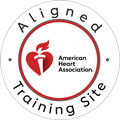In the high-stakes environment of a cardiac arrest, seconds matter—and so does know exactly what to look for. While high-quality chest compressions and early defibrillation are the backbone of Advanced Cardiac Life Support (ACLS), identifying and treating the underlying cause of arrest is what truly saves lives. This is where the Hs and Ts come into play. These reversible causes offer a critical opportunity to intervene and reverse the reason the heart stopped beating. Every healthcare provider trained in ACLS must master this systematic approach, not just to improve survival outcomes, but to restore meaningful life.
The Hs and Ts mnemonic represents the most common and treatable causes of cardiac arrest. This structured checklist allows providers to think quickly and clearly in chaotic situations. Each “H” and “T” stands for a condition that, if identified and addressed rapidly, can dramatically change the course of resuscitation. From hypoxia to thrombosis, these conditions require prompt recognition, clinical insight, and coordinated action. Providers who understand how to integrate these into their resuscitation protocols are far more likely to stabilize patients and avoid preventable deaths.

The H’s: Hypoxia to Hypothermia
Hypoxia
Hypoxia is one of the most frequent contributors to cardiac arrest, particularly in respiratory failure or trauma cases. Recognizing signs such as cyanosis, low oxygen saturation, and altered mental status can prompt early airway intervention. Providers should prioritize effective bag-valve-mask (BVM) ventilation and, when necessary, secure the airway through endotracheal intubation. Optimizing oxygen delivery includes ensuring high-flow oxygen availability, proper mask seal, and confirming airway patency. Delay in correcting hypoxia can lead to irreversible brain damage and cardiac standstill.
Hypovolemia
Hypovolemia, or fluid loss, is another critical “H” that can cause pulseless electrical activity (PEA) or asystole. Often resulting from trauma, gastrointestinal bleeding, or dehydration, it requires a high index of suspicion. Signs include flat neck veins, hypotension, and poor perfusion. Rapid fluid resuscitation using crystalloids or blood products is essential. Monitoring response through blood pressure, pulse quality, and end-tidal CO₂ can help guide further treatment. Recognizing hypovolemia early, especially in trauma patients, can prevent progression to cardiac arrest.
Hydrogen Ion (Acidosis)
Hydrogen ion buildup, known as acidosis, can severely impair cardiac contractility and responsiveness to medications. Acidosis can be metabolic or respiratory in origin, often resulting from prolonged arrest or underlying sepsis. Arterial blood gases (ABGs) are essential for identifying pH imbalances. In cases of severe metabolic acidosis, bicarbonate administration may be appropriate, although its use should be guided by ACLS protocols and clinical judgment. Ventilation support, especially in respiratory acidosis, remains a frontline intervention.
Hyperkalemia/Hypokalemia
Electrolyte imbalances—specifically hyperkalemia and hypokalemia—are dangerous and potentially fatal triggers of arrhythmias. Hyperkalemia presents with peaked T-waves, widened QRS complexes, and eventually a sine-wave ECG pattern. Emergency treatment includes administration of calcium chloride or gluconate, insulin with glucose, and potentially sodium bicarbonate. On the other hand, hypokalemia may manifest as flattened T-waves, prominent U-waves, and ventricular arrhythmias. Both conditions demand rapid correction to avoid deterioration during resuscitation.
Call Us Now
Get the Best CPR Class in Indianapolis Today!
Hypothermia
Hypothermia is an often-overlooked cause, particularly in drowning, environmental exposure, or drug-induced scenarios. Core temperature assessment via esophageal or rectal probes is crucial. Hypothermia slows metabolic processes and can mask signs of life, but it may also offer neuroprotection if properly managed. Controlled rewarming techniques, including warm IV fluids, external warming devices, and heated humidified oxygen, should be implemented with caution. In cold-water drowning cases, extended resuscitation efforts may be warranted, as survival has been documented even after prolonged submersion.
The T’s: Toxins to Thrombosis
Toxins
Among the “Ts,” toxins are a major culprit of sudden cardiac collapse. Overdoses of tricyclic antidepressants, calcium channel blockers, beta-blockers, and opioids require specific antidotes. For instance, sodium bicarbonate is used for tricyclic overdose, glucagon and high-dose insulin for beta-blockers, and naloxone for opioid toxicity. A detailed history, physical examination, and tox screen can guide treatment, and a broad understanding of toxicologic emergencies enhances resuscitative efforts.
Tamponade (Cardiac)
Cardiac tamponade is another life-threatening but reversible cause of cardiac arrest. It occurs when fluid accumulates in the pericardial sac, compressing the heart and impairing its ability to pump effectively. Beck’s triad—hypotension, muffled heart sounds, and jugular venous distension—is a classic but often incomplete sign. Point-of-care ultrasound can rapidly confirm diagnosis. Pericardiocentesis, the removal of pericardial fluid, is the definitive treatment and should be performed immediately when tamponade is suspected.
Tension Pneumothorax
Tension pneumothorax can also present suddenly, especially in trauma or mechanically ventilated patients. Signs include absent breath sounds, hypotension, tracheal deviation, and distended neck veins. Immediate needle decompression followed by chest tube placement can relieve the pressure and restore circulation. In some cases, bilateral pneumothorax must be considered, especially when unilateral decompression fails to improve hemodynamics.
Thrombosis (Coronary)
Thrombosis, either coronary or pulmonary, rounds out the list. Coronary thrombosis usually presents as a STEMI, and rapid recognition on ECG, followed by reperfusion therapy—either percutaneous coronary intervention (PCI) or thrombolytics—is critical. Timing is everything; minimizing door-to-balloon time can make the difference between full recovery and irreversible damage. Pulmonary thrombosis, or massive pulmonary embolism, often causes sudden collapse. Suspected in patients with known risk factors like immobility or recent surgery, it can sometimes be treated with thrombolytics or advanced interventions like ECMO in specialized settings.
Systematic Assessment Approach
The 4-Minute Rule
Rapid identification is key, and providers should follow the “4-minute rule”: aim to identify reversible causes within four minutes of arrest. This demands simultaneous assessments, not a step-by-step approach.
Diagnostic Tools and Tests
Dividing responsibilities among team members—airway, circulation, rhythm, diagnostics—allows a systematic evaluation in real time. Point-of-care ultrasound, ECGs, and laboratory studies such as ABGs and electrolyte panels are essential diagnostic tools during this window.
Documentation and Communication
Effective communication is the thread that binds ACLS efforts together. Clear, concise verbal updates and a shared mental model are essential during high-pressure code situations. Post-event debriefings allow teams to reflect on what went well, what was missed, and how to improve next time. These sessions are also critical for identifying system-wide quality improvement opportunities.
Common Pitfalls and How to Avoid Them
Overlooking Reversible Causes
Unfortunately, many reversible causes are missed due to cognitive biases or the chaos of resuscitation. Providers may fixate on a presumed cause and overlook obvious signs. Building a habit of systematic thinking, reinforced through simulation and repetition, can reduce these errors.
Treatment Delays
Delays in treatment are another common pitfall. Reducing time to interventions—like needle decompression or pericardiocentesis—requires both training and resource availability. Additionally, effective pre-hospital communication can prepare emergency departments for immediate action on arrival.
Inadequate Follow-up
Post-resuscitation care is just as important as the resuscitation itself. Failing to investigate the cause of arrest can lead to recurrence. Long-term follow-up and management plans—especially for patients with known reversible causes—are critical for optimizing survival and neurological outcomes.
Advanced Considerations
Special Populations
Pediatrics presents its version of the Hs and Ts. For example, respiratory issues like airway obstruction are far more common in children than myocardial infarction. Dosing for medications and fluids must be precise, and airway techniques may need adjustment based on age and anatomy. Special populations such as pregnant patients and the elderly also require tailored approaches. Comorbidities, altered physiology, and medication interactions all play a role in cause identification and treatment.
Technology Integration
Technology is becoming a powerful ally in this process. AI-assisted tools can help prioritize reversible causes based on available data. Mobile apps and digital algorithms serve as fast reference guides, especially in pre-hospital and rural settings. Telemedicine also opens doors to remote specialist consultations during active resuscitation, improving diagnostic accuracy and decision-making.
Quality Improvement and Outcomes
To truly improve outcomes, teams must track performance and continuously refine their protocols. Survival data, quality metrics, and simulation-based training can highlight strengths and gaps. Reviewing cases through morbidity and mortality conferences or structured debriefings keeps learning active and meaningful. Staying current with emerging research ensures that care evolves alongside evidence.
Conclusion and Call to Action
Mastering the Hs and Ts framework is essential for any healthcare provider involved in cardiac arrest management. These reversible causes represent the difference between successful resuscitation and tragic outcomes. By systematically working through each potential cause—from hypovolemia and hypoxia to tension pneumothorax and toxins—medical teams can identify and treat underlying conditions that standard CPR alone cannot address.
The ability to quickly recognize and respond to these reversible causes requires thorough training, regular practice, and confident decision-making under pressure. Healthcare professionals must maintain current knowledge of advanced cardiac life support protocols to provide the highest standard of emergency care.
Ready to enhance your emergency response skills? CPR Indianapolis, an American Heart Association training site, offers comprehensive ACLS certification in Indianapolis through stress-free, hands-on courses. Our expert instructors ensure you’re fully prepared to handle critical situations with confidence. Whether you need initial certification or renewal, we also provide CPR certification in Indianapolis, BLS for Healthcare Providers, PALS, and First Aid training.
Don’t wait until an emergency strikes. Invest in your professional development and patient safety today. Contact CPR Indianapolis to schedule your ACLS training and join the ranks of healthcare providers equipped to save lives when every second counts.


